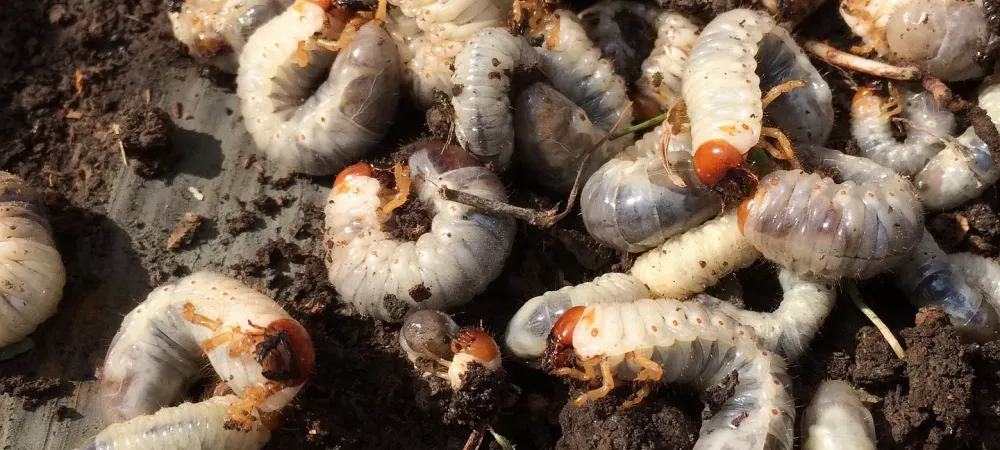How To Treat Your Lawn For Grubs

Are grubs eating away at your lawn? Nobody wants their yard to be ruined by bugs, so we’re here to teach you how to identify, defeat, and prevent grubs once and for all.
What Are Grubs?
Grubs are the larvae of adult beetles who have laid their eggs in your yard. Once these eggs hatch, the larvae begin to feed on your grass, and that’s where the trouble begins! These little pests have C-shaped white bodies, darker colored heads, and are usually only visible upon digging into the soil. If you start to notice signs of damage, your lawn might have more unwanted visitors than it can handle.
The Life Cycle of a Grub
Here in the Seacoast region, we have two types of white grubs, the European chafer, and the Japanese Beetle. European chafers lay their eggs in late June; Japanese beetles in July and August. The eggs hatch and the young grubs begin feeding on grass roots within one to two weeks. Depending on the type of grub you have, you can expect to see lawn damage beginning in early April to mid May and again late August through late October.
Grubs feed until fall and then burrow deep into the ground to overwinter. In the spring, grubs burrow upwards to the grass roots, resume feeding until late May, and then transform into pupae. Adult Japanese beetles emerge around the first week of July; European chafers about two weeks earlier.
Signs of Grubs In Your Lawn
How can you tell if your lawn is suffering from grub damage? Don’t wait until you see them. These voracious creatures are so tiny they are almost impossible to see without digging. Lawn damage from grubs typically begins in late June through August. Signs of grub damage may include:
- Browning or withering grass due to root damage.
- Sections of turf that easily be rolled back like a rug to reveal grubs.
- A sudden influx of raccoons, crows, or skunks visiting your backyard.
How To Prevent Grubs In Your Lawn
Grub prevention methods are most effective right when the larvae are beginning to hatch, so the best way to break the lifecycle is to treat your lawn with an annual preventative treatment. Another thing to keep in mind is that while you might not be able to naturally prevent all grubs from settling into your grass, a properly maintained yard is able to handle larger amounts of them. Mowing regularly, at the proper height (3.5-4''), aerating the lawn, and reseeding dead patches are just a few ways you can make sure your lawn is more resilient than ever.
Lean on Expert Lawn Care in the Seacoast
If you’re having trouble with grubs, contact Allegro Lawn! Our lawn care technicians provide both curative and preventative grub treatments to deliver long-term protection. We proudly offer low toxic treatments that work, so don’t hesitate to reclaim your lawn today!